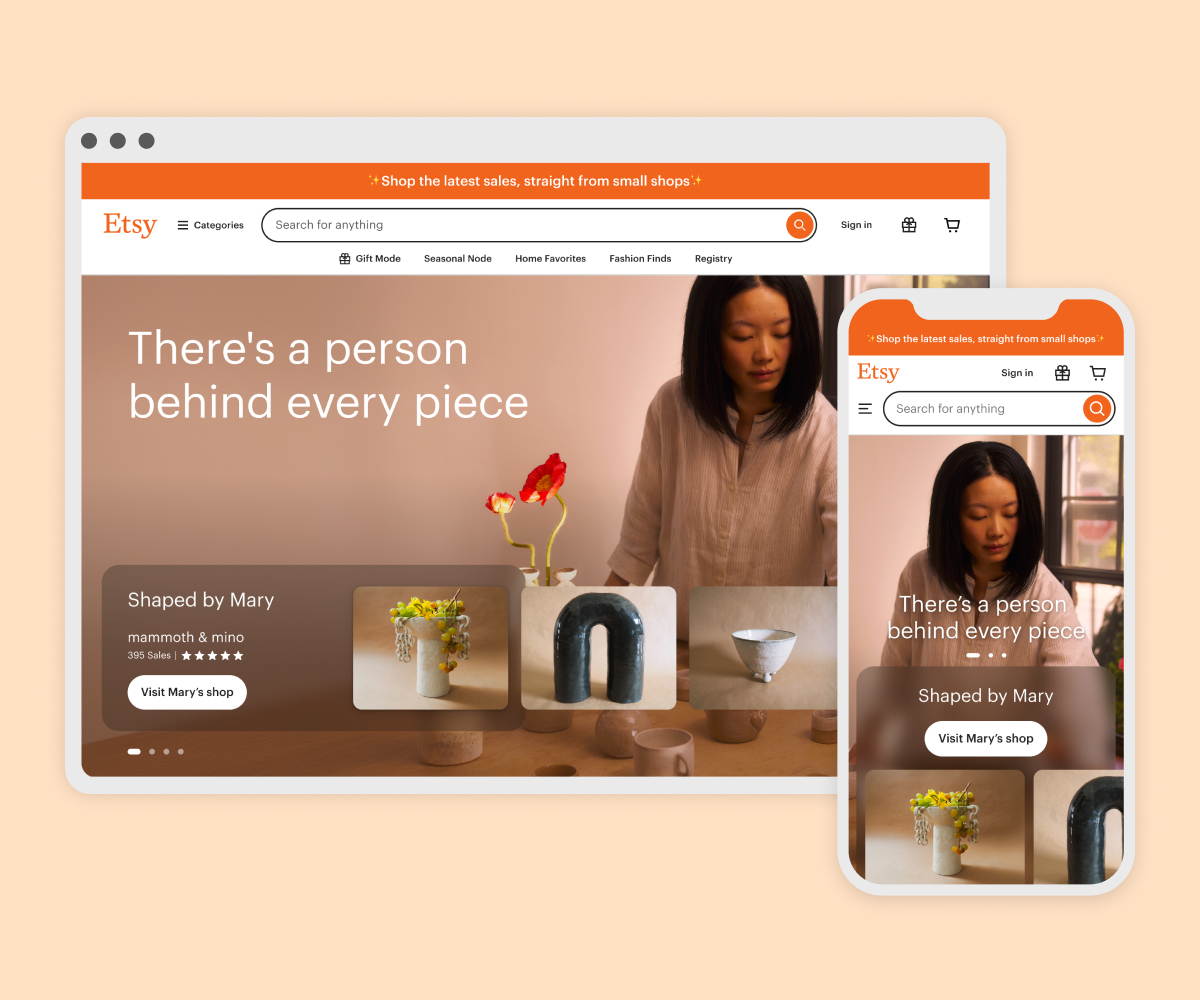Etsy has been grappling with an influx of generic “junk” and AI-generated products on its platform. The service revised its seller policy on Tuesday, introducing new labels that clarify whether a seller made, designed, sourced or handpicked an item. This marks the first time it has dealt directly with artificial intelligence in its seller policy, […]
© 2024 TechCrunch. All rights reserved. For personal use only.
Etsy has been grappling with an influx of generic “junk” and AI-generated products on its platform. The service revised its seller policy on Tuesday, introducing new labels that clarify whether a seller made, designed, sourced or handpicked an item. This marks the first time it has dealt directly with artificial intelligence in its seller policy, with the addition of clear guidelines around what the site does and doesn’t accept.
Etsy explained that the new set of “Creativity Standards” requires sellers to classify the over 100 million items on the platform with clear labels that state the level of “human involvement” that went into the product. The new labels are located under the “Item Details” section in the description.
For example, if a store owner sells vintage goods, those items would be marked as “Handpicked.” Craft and party supplies should be labeled as “Sourced.” The “Handmade” label, meanwhile, refers to physical products made by the seller themselves or with tools like a 3D printer or Cricut machine.
The new “Designed” label is likely a response to the increasing presence of AI-generated items that have taken over the once handmade marketplace. Etsy has received considerable backlash in recent years for accepting AI art, due to its impact on more traditional artists. AI tools are capable of mimicking artists’ styles to generate artwork. Despite ethical concerns, the service is embracing this technology.
As the company explains in its Seller Handbook, sellers can, “use their original prompts in combination with AI tools to create the artwork they sell on Etsy.” Sellers must label their item as “Designed by,” which tells buyers that what they’re purchasing might be designed with generative AI, an outside production partner or other digital tools.
“Permitted examples of this might include a fantasy scene based on a seller’s original prompt or inputs and produced by an AI generator, or a custom portrait of a buyer’s pet generated using AI tools,” the company added. “Sellers must disclose within their listing description if an item is created with the use of AI.”
While sellers are permitted to design items using AI tools, which Etsy calls “Seller-prompted AI creations,” Etsy has added a new rule whereby they aren’t allowed to sell AI prompts. You’ve likely seen these types of listings flood the platform, such as “10,000 Midjourney Prompts,” “Ultimate ChatGPT Prompts Pack,” and so on. A spokesperson told TechCrunch that these listings would be flagged and removed from Etsy starting today.
During the company’s first-quarter earnings call, CEO Josh Silverman reassured investors and sellers about Etsy’s commitment to keeping “commerce human,” he said. According to Silverman, Etsy removed four times the number of listings that violated its Handmade policy compared to the previous year.

Leave a Reply